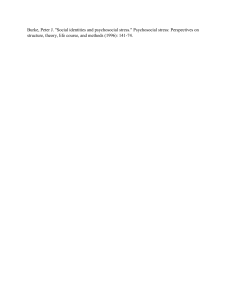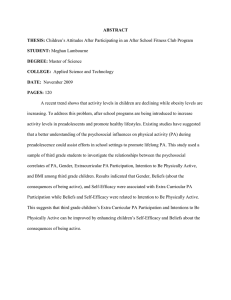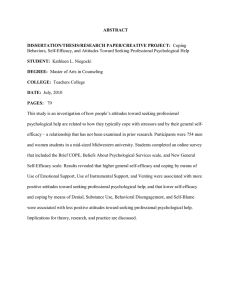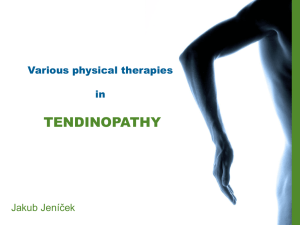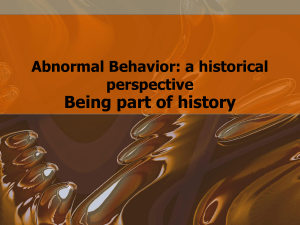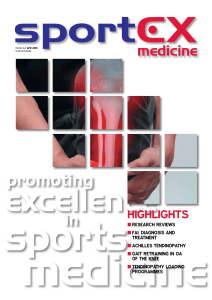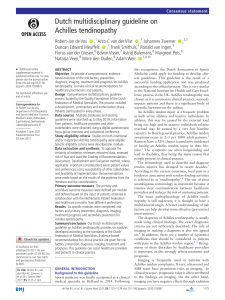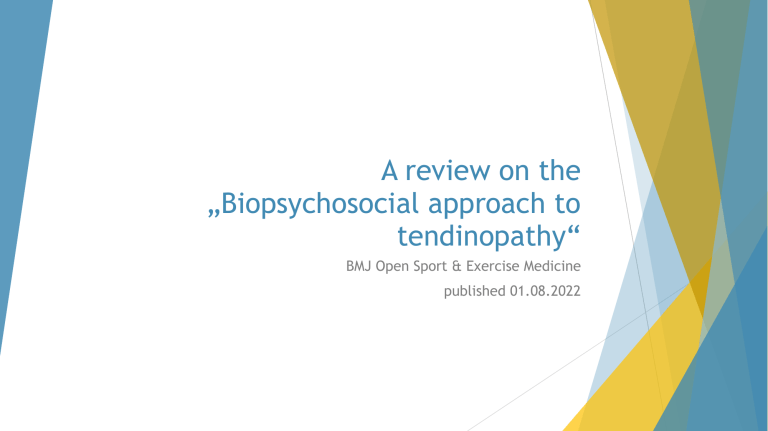
A review on the „Biopsychosocial approach to tendinopathy“ BMJ Open Sport & Exercise Medicine published 01.08.2022 Edgar N, Clifford C, O'Neill S, et al. Biopsychosocial approach to tendinopathy. BMJ Open Sport & Exercise Medicine 2022;8:e001326. doi:10.1136/ bmjsem-2022-001326 This review discusses the current psychological and psychosocial developments in muscolosceletal medicine and how these translate to treating tendinopathy through a biopsychosocial model. Muscolosceletal u psychosocial factors u u self-efficacy + u u individual’s perception of their ability to succeed in particular situations influencing the relationship between pain and disability fear-avoidance u u fear, anxiety and depression affect pain and disability levels, harming rehabilitation describes the interpretation of pain via maladaptive pathways with catastrophizing and hypervigilance kinesiophobia u causing deconditioning and predisposing to further injury FACS (Fear Avoidance Components Scale) Tendinopathy u Changes in damaged tendons, leading to pain and reduced function u Exercise and loading programmes are the first-line management u Persistent tendon pain can have a negative psychological impact u An increasing awareness of the psychological impact on rehabilitation outcomes Psychosocial factors in Tendinopathy u structural changes in imaging often do not explain the response to exercise led interventions u factors u u psychological fears u patient rating of pain u tendinopathy’s impact on quality of life u self-efficacy u fear-avoidance Misconceptions lead to psychological distress, depression and sensitivity to pain Patient education in Tendinopathy u Health literacy for informed choices u Empowerment for self-management u u self-efficacy u pain catastrophising Patient–clinician interaction with involvement and emotional support u communication style u being open to patient questions u -> better adherence and improved outcomes Empowerment Common-Sense Model of Self-Regulation Reframing biopsychosocial factors through patient education u Misconceptions regarding u pain u treatment u prognosis Pain education u Physiological or pathological u Chronic pathological pain u u u increased sensitisation of the central nervous system via altered processing in the brain, malfunctioning of antinociceptive mechanisms and increased activity of pain pathways u neuronal regulation on tendon homeostasis and neuropathic pain Self-efficacy u no further degeneration and progress to rupture u pain not a measure of tissue damage u pain is not harmful during treatment -> fear-avoidance RECONCEPTUALISING Treatment education u 50% of patients abandon exercise programs u Patient empowerment u Self-efficacy u Self-prescribed rests tend to give suboptimal outcomes u Inform about the various treatments and mention the effectiveness of active loading programs Conclusion u Loading programmes remain the gold standard u Psychological misconceptions influence patients adherence u Psychosocial factors such as fear-avoidance are not innate and are a result of social and environmental factors -> patient education u Psychosocial factors are being recognised as key components in tendinopathy u Opportunity for positive outcomes
